The National Dish of the British Grand Prix? Chicken Tikka Masala
Welcome to Grand Prix Gastronomy! Believe it or not, England's national dish was voted to be Indian favorite chicken tikka masala.
This project is pretty simple. As a complement to each race weekend, I’ll be cooking the national dish of that race’s host country and sharing information about the process and that dish’s history along the way in an effort to grow more deeply immersed in the local culture from my own home.
What Is Chicken Tikka Masala?
When you think of British food, you're probably thinking of stereotypes like mushy peas or bangers and mash. However, the folks across the pond overwhelmingly voted chicken tikka masala as England's national dish. You'll probably hear people claim it's because of England's stunning multiculturalism, but I think we're all aware that it has a whole lot more to do with colonialism. The fact that an Indian dish has become so popular in Britain isn't because British people are notoriously kind and welcoming to different cultures. It's because British people spent a really long time subjugating other countries and happened to bring back some good food in the process.
So, here we are: chicken tikka masala has been recognized as the country’s national dish! There are a lot of different origin stories for this dish, but historians are, at the very least, confident that it was popularized by the South Asian community in Great Britain. Whether it actually originated in the Punjab region, as some historians suggest, is moot; its current preparation has been largely done with ingredients available in Western countries.
If you want to get stereotypically British, that’s also fine. Fish and chips, a full English breakfast, shepherd’s pie, and roast dinner are all great options for something more “traditional,” but I do personally prefer to cook a meal that places the British identity on the backburner and instead flips the script on the way we perceive that country. Colonization, after all, depends in large part on erasing the historical identity of a region; it’s only fair to allow those cultures space to shine.
This Week's Recipe
I picked a recipe from food blog Swasthi’s Recipes, which features a description of the dish and also the distinctions between the Indian preparation of chicken tikka masala when compared to the British version. This recipe favors the British preparation.
I simply cannot have curry without rice, so I’m serving this alongside basmati rice — annnnnd one of my favorite breads ever, garlic naan. I’ve made the linked recipe from Food & Wine multiple times with success.
Cooking Chicken Tikka Masala
I highly recommend getting a head start on your chicken tikka masala the day before you want to cook it, just to give your chicken thighs time to marinate in all that spicy, yogurty goodness. Usually when I go out of my way to prep one thing, I’ll do everything — which in this case was also chopping veggies, measuring out spices and other ingredients, and even setting out the cookware I knew I’d need the next day.


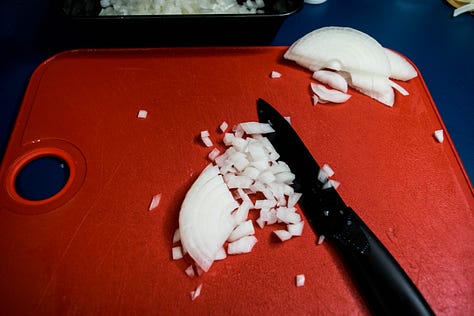
That helps me especially because I am not particularly skilled at managing multiple pans at once, and for this recipe, if I wanted to cook everything at the same time, I’d be making: 1) chicken, 2) tikka masala sauce, 3) basmati rice and 4) naan. I don’t have enough kitchen space for all that, and I most definitely do not have the brain space for it.
So, the day that I intended to do the most cooking, I started off my morning by prepping the naan dough, which had risen and was ready to be cooked up on my lunch break. It was pretty simple to divide the dough, roll it out, cook one naan at a time, and slather the whole thing in the garlic butter I’d left melting on the stove. Cooking naan is a fairly quick process, so you won’t have a ton of time to be thinking about anything else.

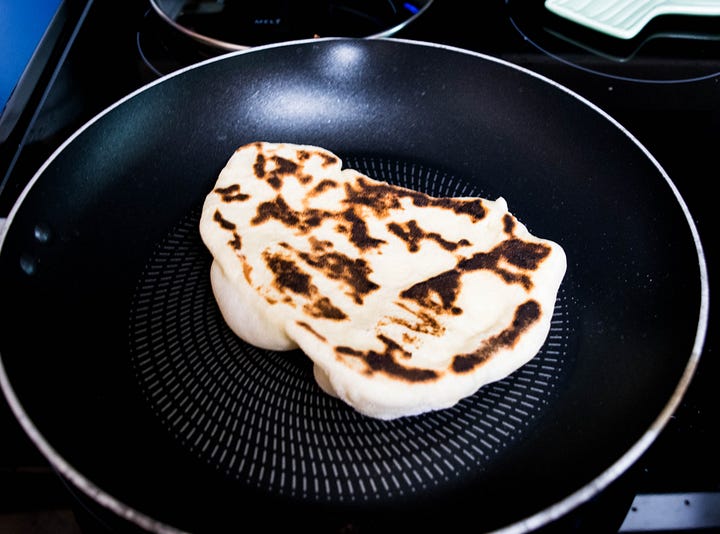
After that was done, I transitioned to my chicken. The recipe I’ve selected, you might notice, mentions that should start the tomato gravy and then deal with the chicken… but in reading the recipe, I couldn’t find a ton of benefit in doing it exactly that way. So, as a result, I cooked the chicken in the oven during my lunch break as well. That involved skewering your marinated chicken thigh bites (I used metal skewers, since they’re super easy to clean and reuse) and baking it all at high heat for about 20 minutes (flipping halfway through). That meant I got that part of my meal over and done with before I had to head back to work to finish off my day. I pulled the chicken off the skewers when they’d cooled, covered ‘em, and then popped them in the fridge. I brought the plate of chicken out when I started my gravy so that the pieces wouldn’t be super cold when I dumped them into the sauce, but the sauce is going to do just fine in warming everything up; you just might want to let the chicken simmer for a little while longer than the recipe calls for.
Whew. Got all that? Because now we’re finally about to start on that sauce.
I heated up ghee and sautéed my onions until they were nice and golden, then I added ginger, garlic, and green chili. Cook until that’s fragrant, then add your spice blend (I highly recommend mixing it all up before you start cooking, if only to keep track of what you’ve added and what you haven’t). You’ll mix everything up, then lower the heat and add your tomatoes. Cook that down, then add water, and let the whole thing simmer until it gets nice and thick. At that point, add in some cream, then taste it all to see if it needs sugar. (You’ll know it does if it seems particularly astringent or tangy.) If it does, add ‘er in. Return the chicken and some fenugreek, let it get nice and warm, and then serve.
While the recipe calls for you to spend the post-water-addition simmer time making the chicken, I used that time to whip up some basmati rice, to which I added a cinnamon stick, cloves, cardamom pods, saffron, and ghee, which resulted in a savory, spiced rice similar to what I’ve had in Indian restaurants.
I plated the rice first, then poured some of the chicken tikka masala on top and popped my naan on the side. For my wine pairing, I opted for gewürztraminer. This white is sweet, aromatic, and floral, with a little hint of gingery spice and some sharp rose and grapefruit notes. It’s a great fit for highly spiced dishes.
So, What's the Verdict?
I have made a lot of sorry excuses for Indian-style curry in my day, but this chicken tikka masala? My god, it was great. It tasted so much like the vague memory of an exceptional chicken tikka masala I had while immensely drunk in London once that one bite of this dish brought back a lot of memories of that trip that I thought had been lost to the wind. Nostalgia in every bite? You couldn’t make this stuff up!
My cooking process for this dish was a little drawn out, but I do think it was worthwhile, because there’s really not much I’d want to change — other than maybe puréeing the tomatoes and/or letting the sauce simmer for longer. I suffer from the traditional bland white woman’s inability to figure out the nuances of cooking a great rice on the stovetop, but I got a little closer to success this time. I rinsed my rice like I was trying to let the last bit of Ronald McDonald red box dye run from my hair before I even thought about touching a towel, which worked out great. The lack of starch meant each grain of rice remained separate from all its buddies. However, I do wish I’d salted my cooking water; I intended to and entirely forgot. A task for next time!
And when it came to my naan, I was honestly pretty proud — though there’s still room for improvement. I probably could have benefitted by rolling the dough out thinner, but I am also the kind of person who likes the softness of a barely-cooked bread interior. (Or maybe that’s just what I tell myself to redeem my not-totally-perfect yeasted baking adventures — who knows!) I had this issue the last time I made naan at home, but I did really improve on everything with this recipe. I do still have work to do, though.
Overall, though, I was so freakin’ stoked about how this dish came out. It was a great blend of “food I knew I’d like” and “cooking processes that are still challenging,” which made for a final product that was comforting and a day in the kitchen that was super educational. Roasting the meat on skewers and adding it in once the sauce was complete was such a game changer! I truly cannot wait to make this again as soon as I can.
Let's Chat!
As usual, thank you to all the sweet humans who spend their weekends making food based on the recipes I share! It truly does mean the world to me!
If you want to stay tuned…
Here are all the relevant links in one place, if you want to subscribe:
All Grand Prix Gastronomy-related content will be free — but if you want to drop me a donation on PayPal, that’s always welcome.





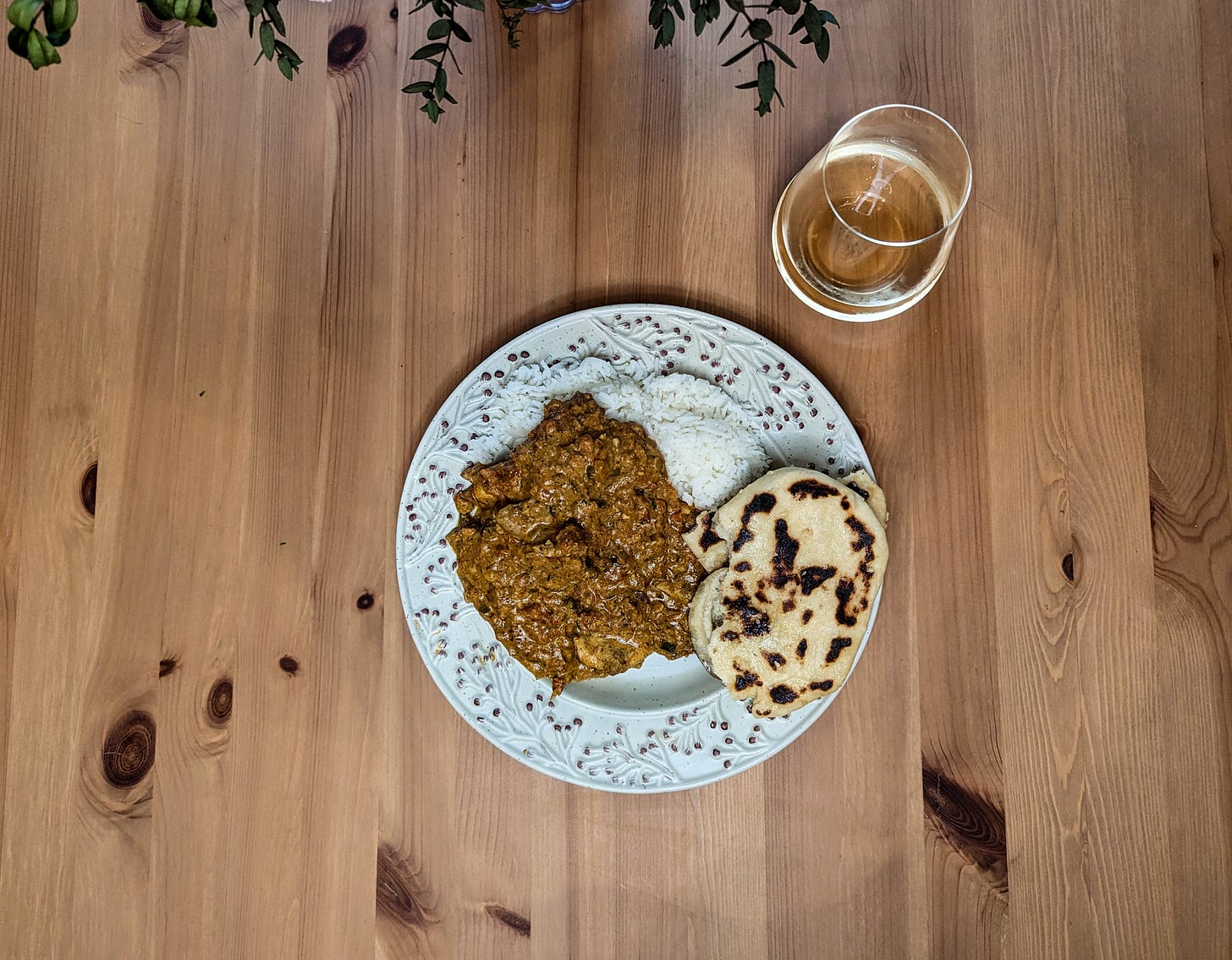
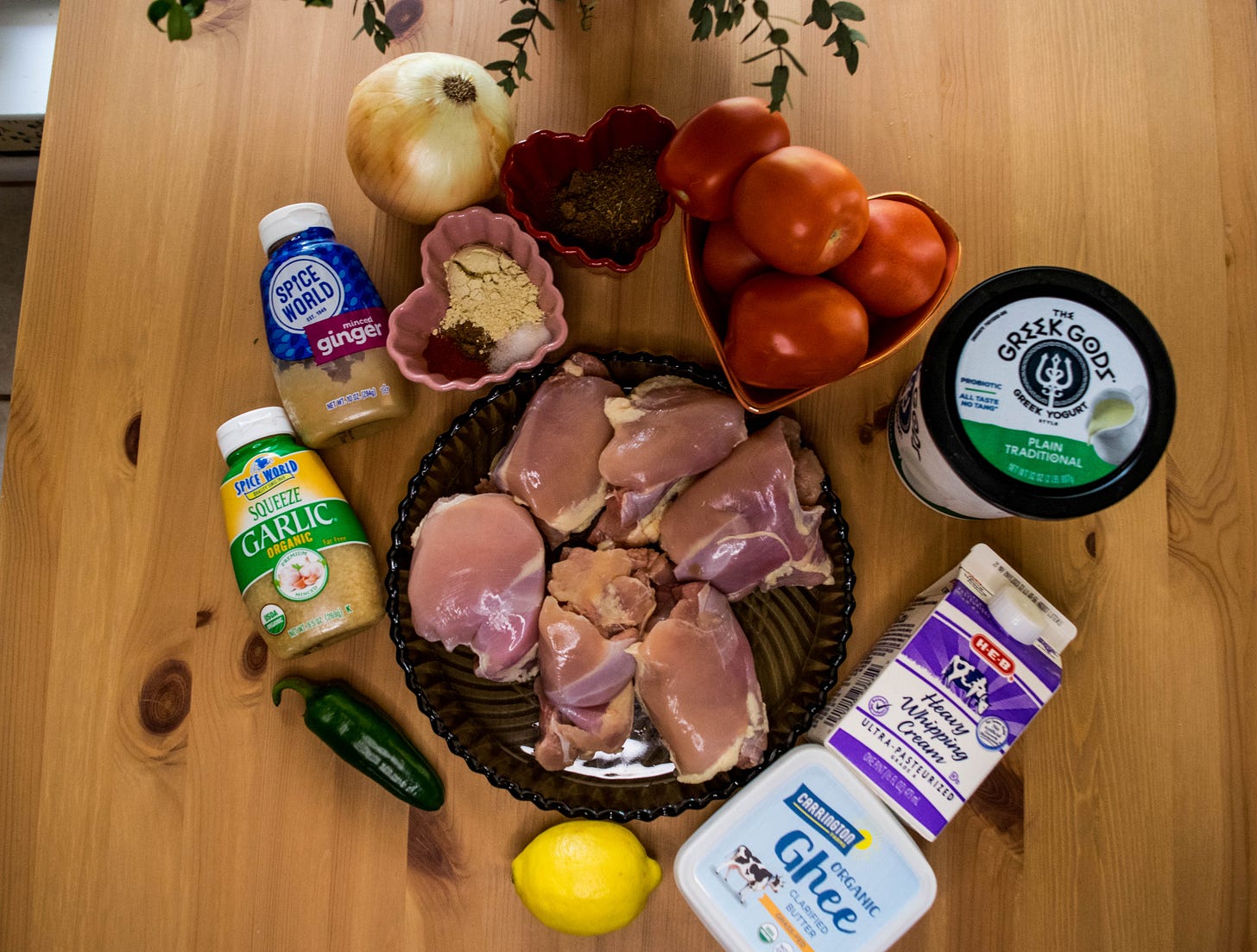


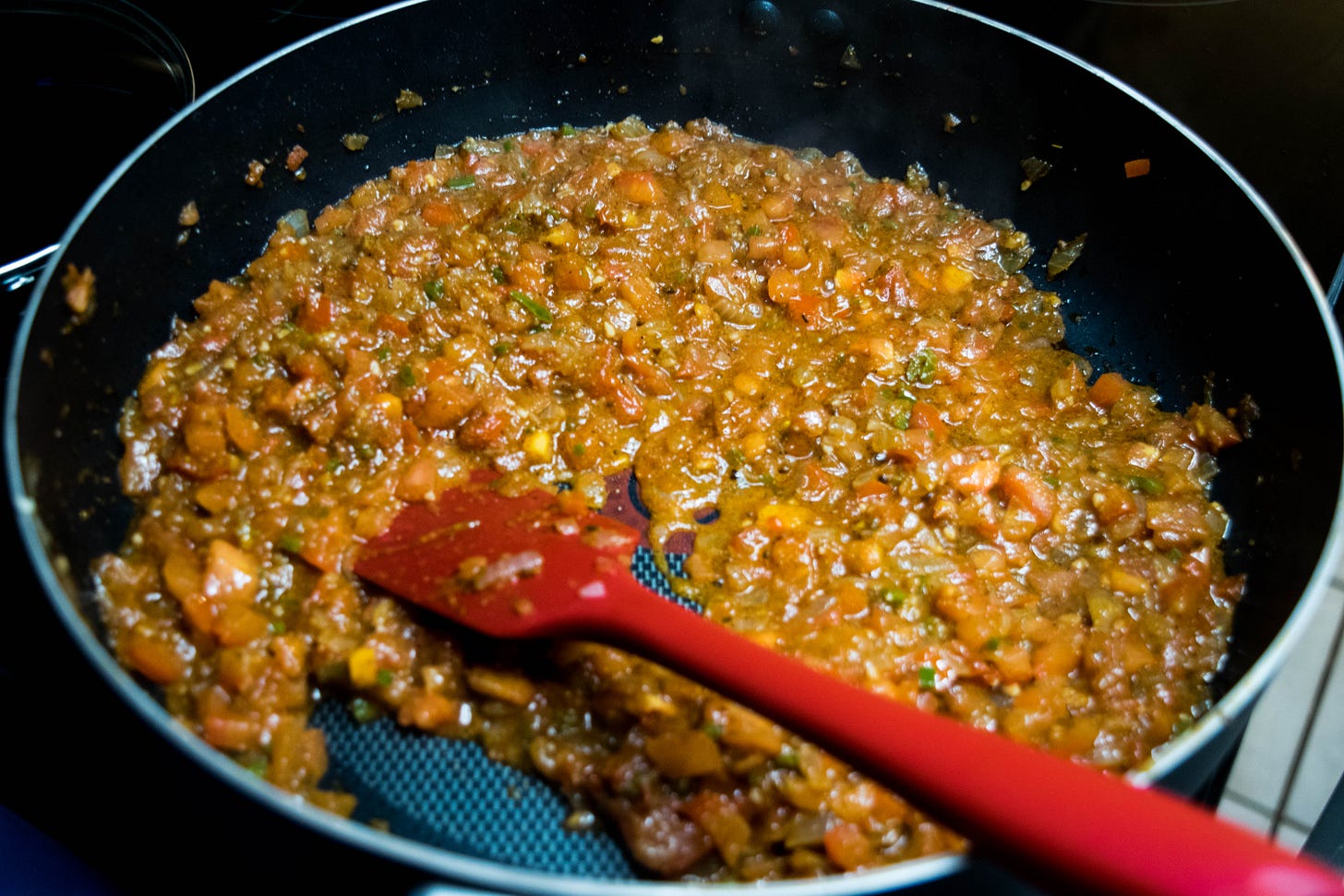

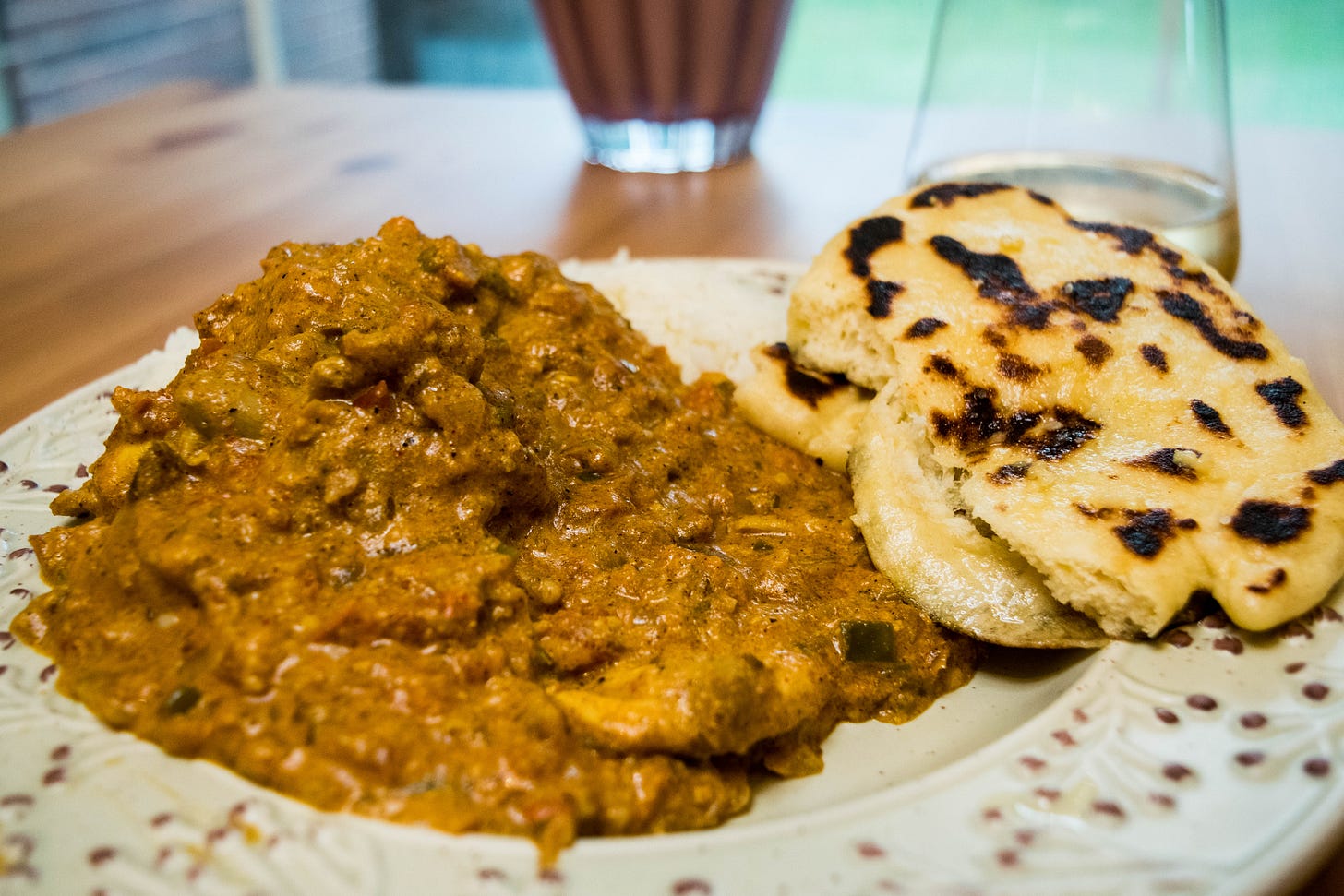


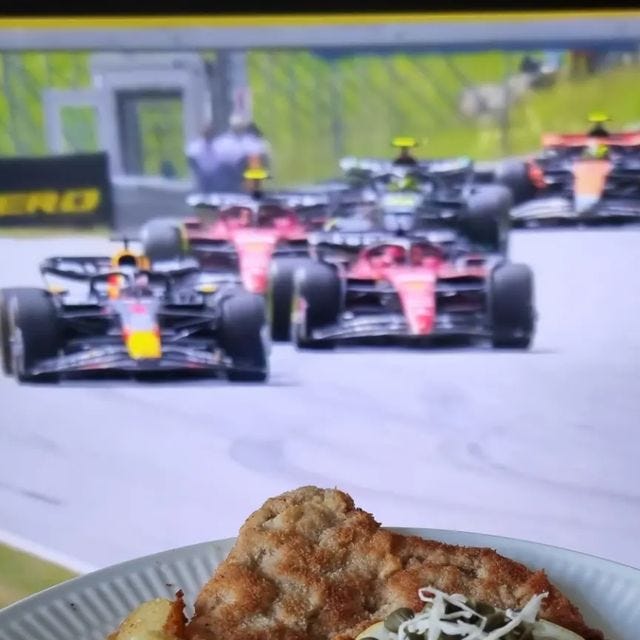
hello dear , i am vrery faithful in the website . i love in indian food
Dear Elizabeth - please take some time to actually learn some history before spouting off complete nonsense surrounding the origins of 'chicken tikka masala.' First off the dish DID not come from/or was not brought back from India - its NOT an Indian dish (if you ask anyone in India who has never been to Britain they will not know what you are talking about - they don't even know what the word curry means) the term literally translates to OK chicken masala!!!! Secondly, although you allude to the mysterious origins of this dish its common knowledge that it was developed not by some English colonialist or even during the period of colonialism (which ended in 1947) but by a Pakistani immigrant called Ali in SCOTLAND in 1975!!!!!!!!!!!!!!!!!!!!! who actually passed away not that long ago. The dish has nothing to do with colonialism, was never brought from India it does not even exist in India and wasn't even invented BY AN INDIAN!!!!!! but yes the guy came over and was able to start a new life in the UK because of colonialism roots (yes - so it would be reasonable to assume that colonialism played a positive role in his life) and his dish has ONLY became famous because of the kind, embracing and welcoming approach to other cultures by the British - if British people had not gone into his restaurant and trusted his food it would never be a popular mainstay dish like it is - THINK before you spout nonsense and vitriol. Before you try and virtue signal consider how insulting you are to the inventor of this amazing British dish!!!! RIP ALI and maybe consider that the britisher wasn't the only colonial power the world has ever known i beg you visit the arab empire and see how welcoming they are to indians - it might wake you up past woke.